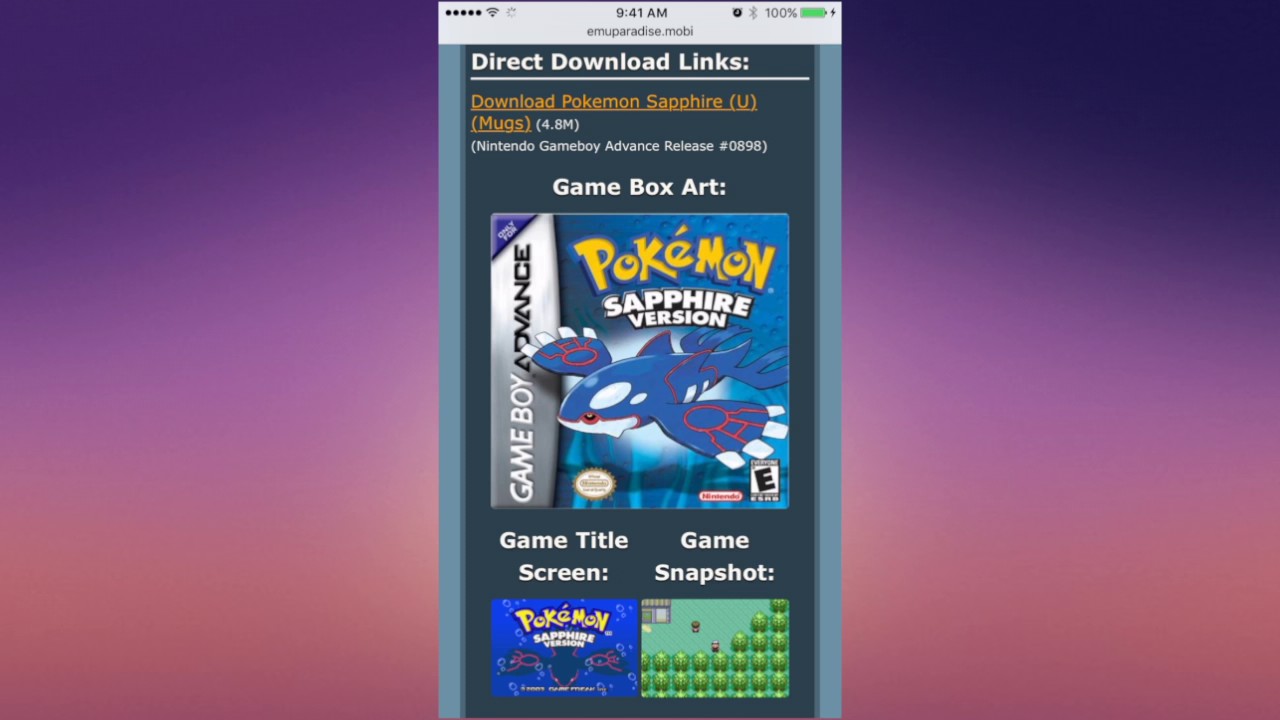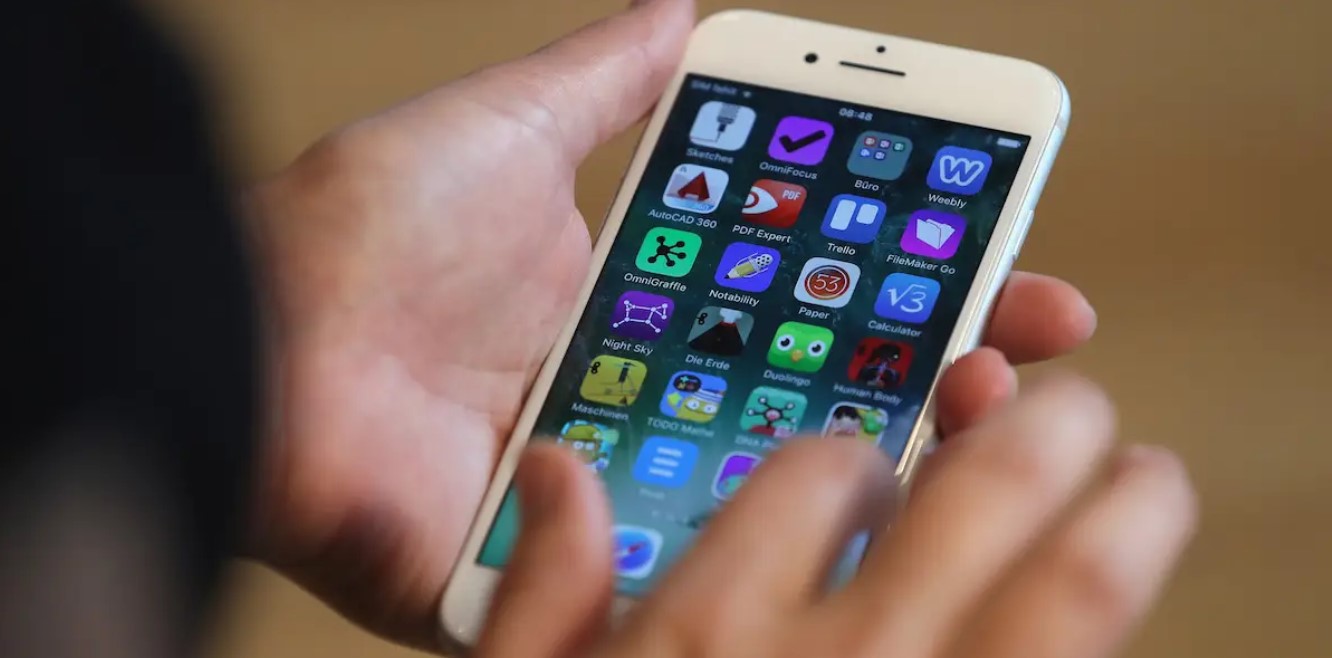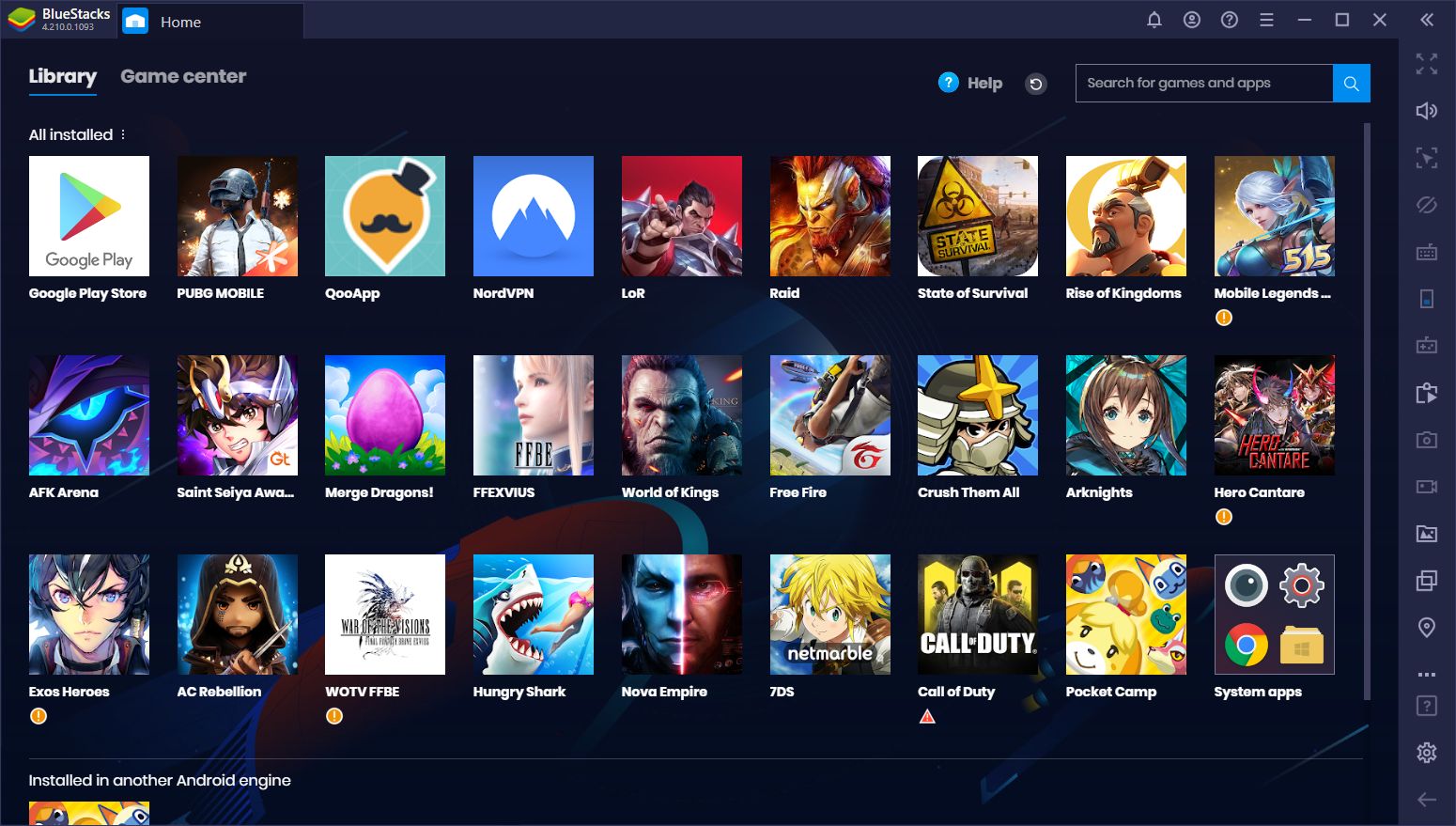Introduction
Avid gamers who own an iOS device often find themselves limited by the available games on the App Store. While there may be a wide range of games to choose from, sometimes you just want to experience the nostalgia of playing classic console titles on your iPhone or iPad. That’s where downloading ROMs on iOS can come in handy.
ROMs, or Read-Only Memory files, are digital copies of games that can be played on emulators. These emulators allow you to recreate the gaming systems of old, such as the Super Nintendo, Game Boy, or Sega Genesis, right on your iOS device. With a vast library of ROMs available, you can dive into the world of retro gaming and relive childhood memories or discover timeless classics.
While downloading ROMs on iOS may not be as straightforward as downloading apps from the App Store, it’s a relatively simple process that can be achieved by following a few steps. In this guide, we’ll walk you through the process of downloading ROMs on iOS, empowering you to explore a rich gaming experience beyond what is offered on the official app marketplace.
But before we delve into the steps, it’s important to note that downloading ROMs can be a legal gray area. While some ROMs are considered abandonware and can be freely distributed, others are protected by copyright and are illegal to download without proper authorization. It’s crucial to ensure that you only download ROMs for games that you legally own to stay within the bounds of the law.
What are ROMs?
ROMs, or Read-Only Memory files, are digital copies of game cartridges or discs that were originally manufactured for retro gaming consoles. These files contain the game’s data and can be played on emulator software, allowing you to recreate the gaming experience on modern devices like iOS.
Emulators are software programs that mimic the functionality of retro gaming consoles. They provide a platform for running ROMs, essentially acting as virtual machines for games. Emulators can simulate a wide range of consoles, from legendary systems like the Nintendo Entertainment System (NES) and the Atari 2600 to handheld devices like the Game Boy and the PlayStation Portable.
ROMs are essentially the game files that can be loaded into emulators. They contain the complete data from the original game, including the game code, graphics, sound effects, and music. When you run a ROM through an emulator, it recreates the gameplay experience on your iOS device, allowing you to enjoy classic games from the past.
There are different types of ROMs available, including:
- Original Game ROMs: These are the ROMs extracted directly from the original game cartridges or discs. They provide the most authentic gaming experience, preserving the game’s original code and data.
- Hacked ROMs: Hacked ROMs are modified versions of original games that have been altered to introduce new features, characters, levels, or gameplay mechanics. These ROMs offer a unique twist on familiar games.
- Translated ROMs: Translated ROMs are original games that have been modified to include translations of the text into different languages. This allows players who don’t understand the game’s original language to enjoy it.
- Homebrew ROMs: Homebrew ROMs are created by independent developers and enthusiasts. These ROMs feature entirely new games, often inspired by classic gaming styles or entirely original concepts.
Downloading and playing ROMs on iOS devices can open up a world of gaming possibilities, allowing you to enjoy beloved classics and discover hidden gems from gaming history. However, it’s important to respect the legal boundaries and ensure that you only download ROMs for games that you rightfully own or that are freely available in the public domain.
Benefits of Downloading ROMs on iOS
Downloading ROMs on iOS devices can offer a range of benefits and advantages to avid gamers who want to expand their gaming horizons beyond the traditional App Store offerings. Here are several key benefits of downloading ROMs on iOS:
- Access to a Wide Library of Retro Games: By downloading ROMs, you gain access to a vast library of retro games from various gaming consoles. Whether you want to relive the classic Super Mario Bros. on the NES or experience the nostalgic charm of Pokémon Red on the Game Boy, ROMs allow you to play a wide range of timeless and beloved titles.
- Emulation Enhancements: Emulators on iOS devices often come with additional features and enhancements that can enhance your gaming experience. These can include save states, fast-forwarding, and even graphical filters to recreate that retro look. These features provide more convenience and flexibility compared to playing on the original hardware.
- Portability and Convenience: With ROMs available for download on your iOS device, you have the convenience of playing your favorite retro games on the go. Whether you’re commuting, waiting in line, or simply relaxing on the couch, you can access your favorite titles with ease, thanks to the portability of iOS devices.
- Cost Savings: Retro games can often be expensive to purchase, especially for collectors looking to build a physical collection. Downloading ROMs allows you to enjoy these games without the need to invest in expensive cartridges or discs. This can result in significant cost savings while still being able to enjoy a wide range of classic titles.
- Community and Modding: The ROM community is vibrant and active, with enthusiasts constantly creating new mods, hacks, and translations for popular games. By downloading ROMs, you can explore unique fan-made creations and modifications that offer new experiences and twists on familiar titles.
- Preserving Gaming History: ROMs can play an essential role in preserving gaming history. Many classic games are no longer commercially available, and ROMs provide a means to keep these games accessible for future generations to experience and appreciate the rich history of gaming.
Downloading ROMs on iOS devices can greatly enhance your gaming experience, allowing you to explore a wide range of retro games, enjoy emulation enhancements, and experience the convenience and affordability of playing classic titles on your iOS device.
Step 1: Jailbreak your iOS Device
To download and play ROMs on your iOS device, the first step is to jailbreak your device. Jailbreaking iOS allows you to bypass the limitations imposed by Apple and gain full control over your device. This process gives you the freedom to install third-party applications and modifications, including emulators and other software necessary for downloading and playing ROMs.
It’s important to note that jailbreaking your iOS device voids the warranty and may have security implications. Additionally, the process can vary depending on the iOS version, so it’s crucial to research and follow specific jailbreaking instructions tailored to your device and operating system version. Here is a general overview of the jailbreaking process:
- Research and Preparation: Before proceeding, it’s essential to research the jailbreaking process thoroughly and ensure compatibility with your device and iOS version. Take the time to backup your device to preserve any important data.
- Select a Jailbreaking Tool: There are various jailbreaking tools available, such as unc0ver, checkra1n, or Electra. Research and choose a trusted and reliable tool that supports your iOS version.
- Download the Jailbreaking Tool and Connect your Device: Download the jailbreaking tool to your computer and follow the instructions provided. Connect your iOS device to your computer using a USB cable.
- Run the Jailbreaking Process: Launch the jailbreaking tool and initiate the jailbreak process. This may involve putting your device into recovery mode, following on-screen instructions, and waiting for the jailbreak to complete.
- Install a Package Manager: After jailbreaking, your device will have access to a package manager, such as Cydia or Sileo. These package managers allow you to install and manage third-party applications, including emulators.
Once your iOS device is successfully jailbroken, you have unlocked the necessary capabilities to proceed with downloading and installing emulators and ROMs. However, it’s important to exercise caution and only install software from reputable sources to minimize the risk of compromising your device’s security.
Please note that jailbreaking your device may have legal implications depending on your location and the terms of use set by Apple. It’s essential to familiarize yourself with the legalities and potential consequences of jailbreaking in your jurisdiction.
Step 2: Install an Emulator App from Cydia
Once your iOS device is jailbroken, the next step in downloading and playing ROMs is to install an emulator app from Cydia. Cydia is a powerful package manager that provides access to a vast collection of third-party applications, tweaks, and modifications that are not available on the official App Store.
Here’s a step-by-step guide to installing an emulator app from Cydia:
- Launch Cydia: After jailbreaking your iOS device, locate and launch the Cydia app. It may take a moment to populate the available packages and repositories.
- Search for an Emulator: Use the search function in Cydia to find the emulator app you wish to install. Popular emulator apps include RetroArch, Provenance, or Delta for multiple consoles.
- Select and Install the Emulator: Tap on the emulator app’s name to view its details and compatibility with your iOS version. Once you confirm its compatibility, proceed to install the emulator by tapping “Install” or “Get” and following the on-screen prompts.
- Wait for Installation: The installation process may take a few moments, depending on the size of the emulator app and your device’s performance. Ensure that your device is connected to a stable internet connection throughout the process.
- Restart SpringBoard: After the installation is complete, you may be prompted to restart SpringBoard, which is the graphical user interface of iOS. Follow the instructions to complete the installation process and enable the emulator on your device.
Once the emulator app is successfully installed, you will be able to access it from your device’s home screen. Launching the emulator app will present you with a user interface that resembles the console it emulates. From here, you can proceed to the next step of finding and downloading ROMs to play on your iOS device.
It’s important to note that different emulator apps may have varying configurations and compatibility with different systems and ROM formats. It’s advisable to explore the settings and options within the emulator app to optimize your gaming experience.
Remember to use reputable sources and ensure the legality of downloading ROMs for the games you wish to play. Enjoy the wide variety of classic games available on your iOS device and rediscover the joy of retro gaming!
Step 3: Find a Reliable ROM Source
After installing an emulator app from Cydia, the next essential step in downloading ROMs on your iOS device is to find a reliable source from which to obtain these game files. It’s crucial to choose a reputable ROM source to ensure the quality and legality of the ROMs you download. Here are some guidelines to follow when finding a reliable ROM source:
- Research Trusted Websites: Take the time to research and identify trustworthy websites that specialize in hosting ROMs. Look for websites with positive user reviews, a wide variety of ROMs, and an active community.
- Verify Legitimacy: Ensure that the ROM source you select only offers ROMs for games that are in the public domain or that you legally own. It’s important to respect copyright laws and avoid downloading ROMs for games that are still commercially available.
- Check Quality and Compatibility: Look for ROM sources that offer high-quality files and ensure compatibility with the emulator app you installed. Some sources may provide additional information about compatibility or even user ratings to help you make informed choices.
- Avoid Shady Websites: Beware of websites that appear suspicious or offer ROMs for free that are typically sold legally. These websites may contain malware, low-quality ROMs, or scam you into downloading unnecessary software or paying hidden fees.
- Join Gaming Communities and Forums: Engage with gaming communities and forums to seek recommendations for reliable ROM sources. Fellow gamers can provide valuable insights and share their experiences with different websites.
- Consider Custom ROM Distributions: Some websites offer custom ROM distributions that include pre-patched or modified versions of ROMs. These can provide additional features, bug fixes, or translation patches, enhancing your gaming experience.
By following these guidelines, you can ensure that you obtain ROMs from a trusted and reliable source, minimizing the risk of downloading low-quality files or violating copyright laws. Remember, it’s always better to err on the side of caution and only download ROMs for games that you rightfully own or that are freely available in the public domain.
Keep in mind that the availability of ROMs may vary depending on the console and game you are interested in. Some popular ROM sources include websites like Emuparadise, CoolROM, or The Old Computer. However, it’s always recommended to conduct your research and verify the legitimacy and security of any website before downloading ROMs.
Once you have identified a reliable ROM source, you can proceed to the next step of downloading ROMs onto your iOS device and preparing them for gameplay.
Step 4: Download the ROMs
Now that you have found a reliable ROM source, it’s time to download the ROMs for your desired games. Follow these steps to download ROMs onto your iOS device:
- Access the ROM Source: Open your preferred web browser on your iOS device and navigate to the website from which you plan to download the ROMs.
- Search for the Game: Use the search function on the ROM source website to find the specific game you want to download. Make sure to enter the correct game title and select the appropriate platform or console.
- Confirm Compatibility: Before downloading a ROM, double-check that it is compatible with the emulator app you installed. Some ROM sources may provide compatibility information or recommendations.
- Download the ROM: Once you have located the desired ROM, click the download button or link associated with it. A file will be downloaded to your iOS device.
- Organize Your ROMs: To keep your downloaded ROMs organized, consider creating a designated folder within the file manager app on your iOS device. This will make it easier to locate and manage your ROMs.
- Repeat for Other Games: If you want to download ROMs for multiple games, repeat the process outlined above for each game you wish to add to your collection.
Remember to only download ROMs for games that you legally own, or that are freely available in the public domain. Downloading ROMs for games that are still commercially available without proper authorization is considered copyright infringement and is illegal.
It’s also worth noting that some ROM sources may offer different file formats for ROMs, such as .zip or .gba. If your downloaded ROM is in a compressed format, you may need to extract the contents using a file extraction app, such as iZip or WinZip, before proceeding to the next step.
After downloading and organizing your ROMs, you are one step closer to enjoying classic games on your iOS device. The next step is to transfer the downloaded ROMs to your iOS device and prepare for an immersive retro gaming experience.
Step 5: Transferring ROMs to your iOS Device
Now that you have downloaded the ROMs onto your computer, the next step is to transfer them to your iOS device. Follow these steps to transfer ROMs from your computer to your iOS device:
- Connect your iOS Device: Use a USB cable to connect your iOS device to your computer. Ensure that your iOS device is recognized by your computer.
- Access your iOS Device in File Explorer (Windows) or Finder (Mac): On your computer, open File Explorer (Windows) or Finder (Mac) and locate your connected iOS device. It should appear as a separate device or drive.
- Navigate to the File Directory: In the File Explorer or Finder window, navigate to the file directory on your iOS device where you want to transfer the ROMs. This might be a folder specific to the emulator app or a general folder for ROMs.
- Transfer the ROMs: From your computer, locate the downloaded ROM files. Simply drag and drop the ROMs from your computer’s directory to the appropriate directory on your iOS device.
- Eject your iOS Device: After transferring the ROMs, safely eject your iOS device from your computer by right-clicking on it in File Explorer (Windows) or Finder (Mac) and selecting “Eject”.
Once you have successfully transferred the ROMs to your iOS device, they will be accessible within the file directory you selected. The emulator app you installed from Cydia should be able to detect and recognize these ROMs.
It’s important to note that different emulator apps may have specific file organization requirements. It can be helpful to consult the documentation or support resources for the specific emulator app you are using to ensure you place the ROM files in the correct directory for optimal compatibility and ease of access.
With the ROMs successfully transferred to your iOS device, you are now prepared to launch the emulator app and dive into a world of retro gaming nostalgia.
Step 6: Launching the Emulator and Enjoying your ROMs
With the ROMs transferred to your iOS device and the emulator app installed, it’s time to launch the emulator and start enjoying your downloaded ROMs. Here are the steps to launch the emulator and begin playing:
- Locate the Emulator App: Find the emulator app on your iOS device’s home screen or in the app launcher. Tap on the emulator app’s icon to open it.
- Explore the Emulator Interface: After launching the emulator, you will be presented with its user interface. This interface will resemble the user interface of the console or device it is emulating.
- Configure Emulator Settings: Depending on the emulator app you are using, you may have the option to configure various settings to optimize your gaming experience. Consider adjusting options such as controller layout, screen orientation, sound, and graphics settings according to your preferences.
- Navigate to the ROMs: Within the emulator interface, navigate to the directory where you transferred the ROM files. This may involve selecting a specific folder or browsing through a file explorer within the emulator app.
- Select and Launch a ROM: Once you have located the ROM you want to play, select it within the emulator’s directory or file browser. Depending on the emulator app, you may simply need to tap on the ROM file to launch it.
- Enjoy Gaming: Once the ROM is launched, you can enjoy playing the game on your iOS device. Use the on-screen controls or connect a compatible external controller for a more authentic gaming experience, depending on the options provided by the emulator app.
- Customize Gameplay: Emulator apps often allow you to customize gameplay features such as save states, fast-forwarding, or screen filters. Explore the options available within your emulator app to tailor your gaming experience.
With the emulator app successfully launched and the ROMs loaded, you can now immerse yourself in the world of retro gaming. Relive cherished memories, discover new favorites, and enjoy the convenience of having a wide selection of classic games at your fingertips on your iOS device.
Remember to be respectful of copyright laws and only play ROMs for games that you legally own or that are freely available in the public domain. Embrace the joy of retro gaming and have fun exploring the timeless classics and hidden gems from the past.
Conclusion
Downloading ROMs on iOS devices can be an exciting way to relive the nostalgia of classic gaming or discover timeless titles that you may have missed. By following the steps outlined in this guide, you can successfully download and play ROMs on your iOS device.
Keep in mind that the process of downloading ROMs on iOS involves jailbreaking your device, installing an emulator app from Cydia, finding reliable ROM sources, downloading the ROMs, transferring them to your iOS device, and finally launching the emulator to enjoy your favorite games.
However, it is important to note that downloading ROMs for games that you do not own or that are still commercially available without proper authorization is illegal and a violation of copyright laws. Always ensure that you respect the intellectual property rights of game developers and publishers.
Additionally, be cautious when downloading ROMs from untrusted sources, as they may contain malware or low-quality files. Stick to reputable ROM sources and verify the legitimacy of the websites before downloading any ROMs.
Remember, while downloading ROMs on iOS devices offers a myriad of gaming possibilities, it is important to strike a balance between enjoying classic titles and supporting game developers by purchasing legally obtained games.
With the right precautions taken, downloading ROMs on iOS can be a rewarding experience, allowing you to indulge in the nostalgia of retro gaming and unlock a world of timeless classics right on your iOS device.

























